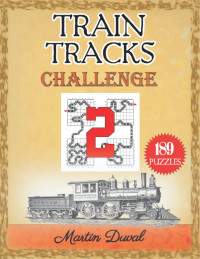- Details
I found this puzzle, long time ago while surfing. It was on a Japanese website, my knowlege of this language are near zero. In seeing the grid I was able to deduct the rules but I was never able to know the name. Then I decided to name this puzzle Sudoku Limits. This is a grid and the solution.


The goal is to put the number 1 to 5 in each row and column without repetition. To help us some cells have clues (I call these cells: limits or milestones). These limits have 4 triangles which are open to one of the 4 directions: north, east, south and west. The clue inside the triangle means that this number must be placed in one of the free cells following the limit ( in the same direction of the triangle) until you reach either the edge of the grid or another limit. In this example with a grid of size 6X6 it have only one limit by row and column (you must use number 1 to 5), but with greater size like 9X9 each row and limit has 2 limits ( you must use number 1 to 7), and for 12X12 size each row and column has 3 limits (you must use number 1 to 9).
How to resolve Sudoku Limits
This is an example of resolution, when I mention a number of a limit genarally it is the only one clue of the four clues that equal my number but if a limit have twice the same number then I will precise with the direction like the 4 west in the limit B5 instead of the 4 south of the limit B5.
First it is better to start with the limits situated at one cell of the edges, because they give us easy hints. By example the 5 in the limit B2 must be situated in the north of B5 but it have only one free cell B6 so the 5 goes in B6. The 4 west of the limit B5 must be in A5. The limit E4 indicate that 1 goes in F4 and finally the 1 south of D2 goes in D1. This give us the following figure.

Now the 4 west of the limit F1 cannot be put in A1 because the column A has already a 4, it cannot be put in C1 or E1 because the limits of these columns indicate that the 4 are on the north of the row 1. The only available cell is B1. For the same reason the 5 of the limit C3 goes in A3 because the column B has a 5. We can put the 4 of the limit E4 in E6 and we have this result.

In column A the 1 could be put only in A2 because the two other free cells have 1 in their rows. In row 6 the only place where the 1 could be is C6. The 4 of the limit C3 goes in C4. Then the 5 of the limit E4 goes in D4 because the columns A and B have already a 5 and the cell C4 is occupied with the 4. We could place the 4 of the row 2 in F2 and put the last 4 in the row 3 in D3.

We progress, we could put 1 of column B only in the cell B3. The 5 of the limit D2 goes in E2. Then the 5 of row 1 goes in C1. And the last 5 goes in F5.

It left only the 2 and 3 to put. We could immediatlely put the 3 south of the limit C3 in C2, now we could easily fill the grid to obtain the solution.

You could notice that this puzzle is pleasant, it does not require a lot of time to resolve but it does need some thinking. The puzzle has 3 sizes: 6X6, 9X9 and 12X12. So don't wait and take the challenge..
{ccomment on}
 No comments
No comments















